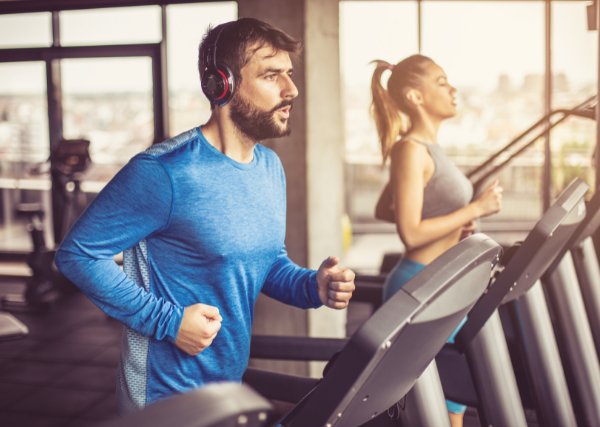Exercising regularly is one of the best things that you can do for your health. Depending on the intensity of the workout, experts recommend between 150-300 minutes of physical activity per week. That’s approximately 25-45 minutes per day, or five workouts of 30-60 minutes per week. [1]
The benefits of exercising can’t be ignored. They include…
- Managing weight
- Combating disease
- Improving mood
- Boosting energy
- Promoting better sleep
- Increasing libido
- And making you more social
While these benefits can be seen no matter how you’re exercising or who you’re exercising with, we’re going to focus on that final point today.
What does the research say on exercising in groups?
Whether you’re hitting a trail or path by yourself, or working out in sync with others, you’re moving and getting your heartbeat up. This is great!
But are those who choose to exercise alone missing out some bonus benefits?
One study looked at med students who, unsurprisingly, were under a lot of stress. Researchers split the med students into three different groups.
One group did a 30-minute group core strengthening and functional fitness training program at least once a week, plus extra exercise if they wanted.
Another group exercised on their own or with up to two partners at least twice a week.
The final group didn’t do any exercise outside of walking or biking to get where they needed to go.
After 12-weeks, the students who exercised in groups saw the most improvement in quality of life, as well as the lowest levels of stress. [2]
Other research has looked into workouts that are in sync such as rowing. A 2013 study had rowers workout in groups or solo. Following the 45-minute workout, those who worked out with a group showed a higher pain tolerance. Researchers believe that this is due to an increased release of endorphins – the “feel good” hormone – due to syncing with other rowers. [3]
This type of coordinated movement is known as “behavioral synchrony”. It often occurs in workouts like rowing, as well as dances or religious rituals.
One study found that rugby players who coordinate their movements during their warm-up exercises perform better on endurance tests following the warm-up. [4]
Researchers believe that this is because the synced movement is strengthening the bond between teammates. This can allow them to push harder and perform better.
As such, exercising with a group can help you get more out of your workout.
Are all group classes worth it?
If you’re now considering joining a class so as to workout with others and experience this behavioral synchrony, there are a few things you should know. 
A 2006 review of studies which looked at solo workouts versus group workouts did find that the most benefits came out of group workouts – with the least amount coming from exercising alone at home – but there was a catch. [5]
The review observed the importance of the classes’ ability to incorporate special techniques to increase social bonding amongst those in the class. The more support that people had during exercise — from researchers, health professionals, or other exercise participants — the greater the benefits.
But this isn’t the case for many classes. In some of them, the group shows up, follows the routine of an instructor, and then go their separate ways.
If you’re looking to join a class for these additional group benefits, try and find one that has a community feel – one where the people are sociable and with good energy.
Is exercising alone not worth it?
If there’s something we don’t want you to take away from this blog, it’s that you shouldn’t exercise alone.
Group settings aren’t everyone’s cup of tea. Your solo workout – whether it’s yoga or running – can serve as a form of meditation. A time for you to be alone and with your thoughts. And that’s totally okay!
As mentioned at the beginning of this blog post, there are many benefits to exercise. You get those benefits regardless of whether you exercise alone or in a group. Just because one has some extra benefits, doesn’t mean the other is pointless.
Compare it to a first-time car buyer. No matter which car they purchase, it’s going to be much faster than walking everywhere. Sure, the sports model is faster, but the basic model is still going to be great for them.
No matter how you exercise, you need this…
When you exercise, you’re exerting energy and losing electrolytes.
Make sure your body is replacing these effectively, as they serve important functions throughout your body.
Two things you’ll want to make sure you’re maintaining healthy levels of are…
B-vitamins, which are crucial for energy production.
And electrolytes, which help keep the body hydrated and maintain muscle and nerve function.
For further reading on these crucial nutrients, click here.
References and resources
- https://www.mayoclinic.org/healthy-lifestyle/fitness/in-depth/exercise/art-20048389
- https://jom.osteopathic.org
- https://www.tandfonline.com/doi/abs/10.1080/1612197X.2013.750139
- https://journals.plos.org/plosone/article?id=10.1371/journal.pone.0136705
- https://www.researchgate.net/publication/228622237_Group_versus_Individual_Approach_A_Meta-Analysis_of_the_Effectiveness_of_Interventions_to_promote_physical_activity
